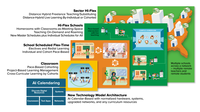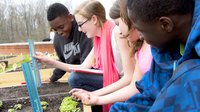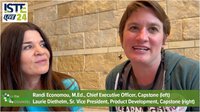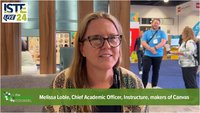Spring Break. For students and teachers alike, this is a much needed rest from the rigors of the classroom before the final chapter of the school year. However, there is a tendency to return from the week off and let everything slide. The next benchmark is testing. After that, nothing matters.
Or does it?
It’s important that we stop and re-assess our goals for our students and ourselves so we can finish strong. Besides great test scores, exactly what do we want to accomplish?
As parents and educators, we are in the business of building people. We are preparing kids for life. According to many employers, the greatest area of weakness for new recruits is social skills. It is our job as caring adults to teach our learners these competencies in order to prepare them for the workforce and for family life.
Education is a relationship business
At the core of education is relationship. Think of the great philosophers like Plato and Aristotle. Their students learned through their dialogue. Or think of the master tradespeople who taught their apprentices a trade through modeling and hands-on work, such as welders and seamstresses.
Relationships change people, not programs or technologies. How can we foster opportunities for deeper learning through relationships?
Relationships that build strength
Here are some ideas to help you and your students finish strong:
- The Studio – Empower students to create with digital tools collaboratively. Move beyond PowerPoint presentations to providing options for fun and interesting group-based projects, such as comics, digital posters, movie trailers, songs, photo galleries, playlists, etc.
- Internships – Coordinate short-term internship opportunities with business and industry leaders in your area. Provide guidance for reflections on these experiences.
- Book Clubs – Offer several titles from which students can choose. Have them gather for student-led discussions of their book. Set a date for a final group project, such as a play or poetry slam.
- Community Solutions – Challenge students to identify a problem in their community, devise a solution, and execute their plan for change. Invite local non-profits to participate.
- Helping the Littles – Schedule time with your feeder schools for older and younger students to spend time working together. Perhaps, they could host a toy drive for your children’s hospital or maybe older students can help younger students struggling with math or reading.
Make room in your schedules by being intentional about what you choose to undertake and guarding the time needed to make it happen.
As you can see, the end of the school year is a great time to think outside-the-box about all of the ways that learning can happen, especially by leveraging relationships and empowering students. Your job is to coach them to be and do their best.
About the author

Tamara Fyke is an educator and social entrepreneur with a passion for kids, families, and urban communities. She is the creator and author of Love In A Big World, which provides mental health, SEL, and wellness curriculum and content. During quarantine, Tamara created MusiCity Kids, an online educational show for kids ages 6-12 that addresses health, movement, character development, STEAM, and more.











